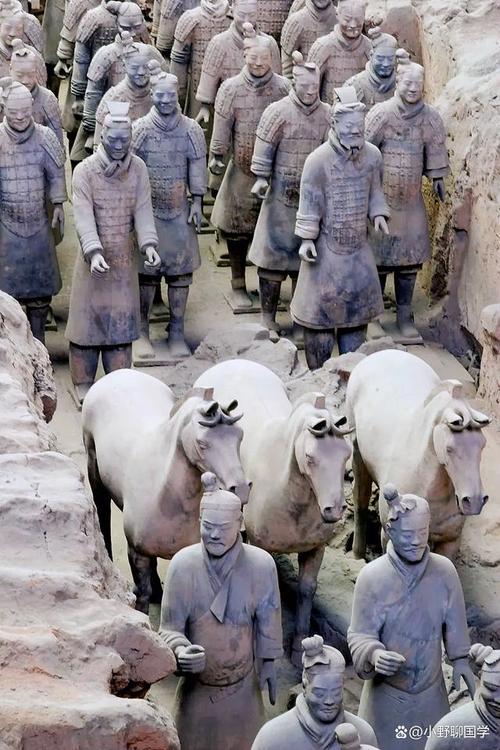
What Did the Terracotta Army Originally Look Like?
An Army Dressed in Vibrant Colors
Qin Shi Huang, the first emperor of a unified China, envisioned an afterlife as grand as his earthly reign. He commissioned the creation of a vast necropolis, guarded by an army of terracotta warriors, to protect him in the afterlife. While we marvel at the sheer scale and detail of these figures today, imagining ranks of earthenware soldiers, their original appearance was far from this monochromatic spectacle.
Qin's army of clay soldiers and horses was not a somber procession but a supernatural display swathed in a riot of bold colors: red and green, purple and yellow. These colors were not merely decorative; they served to distinguish rank and military division, and imbued the figures with a lifelike quality, fit for their role as guardians in the afterlife.
A Glimpse into the Past: Evidence of Color
While much of the pigment has been lost, traces remain, clinging stubbornly to the surface of the figures and offering tantalizing glimpses into the past.
- Pigment remnants: Even today, one can find fragments of pigment on the warriors, hinting at their former vibrancy. Reds, blues, greens, and yellows were used to paint their clothing, armor, and weapons.
- Traces of lacquer and binding agents: The paints used on the Terracotta Army were not simply applied directly to the clay. Instead, they were mixed with lacquer, a natural varnish derived from trees, and other binding agents, to enhance their durability and provide a lustrous finish.
- Analysis of paint fragments: Scientists have been able to analyze the chemical composition of the surviving pigments, providing insight into the materials and techniques used by the ancient artisans. They have identified the use of mineral pigments, such as cinnabar (red) and azurite (blue), as well as organic dyes, like indigo (blue).
The Ravages of Time and Exposure
Sadly, most of the colors did not survive the crucible of time—or the exposure to air that comes with discovery and excavation.
- Humidity and oxidation: The humid environment of the burial pits, coupled with the passage of over two millennia, took a toll on the pigments. Many colors, particularly organic ones, faded or changed chemically.
- Exposure to air: The most significant damage occurred upon excavation. As soon as the painted surfaces were exposed to air, the lacquer layer began to dry rapidly, causing it to shrink and flake off, taking the pigments with it.
Imagining the Spectacle
While we can only imagine the full glory of the Terracotta Army in its original, polychrome splendor, ongoing research and conservation efforts continue to reveal more about their creation and appearance. Digital reconstructions, based on surviving traces and historical records, offer us a glimpse of the awe-inspiring sight that would have greeted visitors to the Emperor's tomb over 2,000 years ago.
Questions and Answers
Q: Why did the colors on the Terracotta Army fade? A: The colors faded due to a combination of factors, including humidity within the burial pits, oxidation of the pigments, and, most significantly, the rapid drying and flaking of the lacquer layer upon exposure to air.
Q: What colors were used on the Terracotta Army? A: The army was painted in a range of colors, including red, green, blue, purple, yellow, and black. These colors were used to denote rank, military division, and to add realism to the figures.
Q: Are there any efforts to restore the original colors of the Terracotta Army? A: While it's impossible to fully restore the faded pigments, scientists are researching ways to better preserve the remaining traces of color and to potentially recreate the original pigments for use in future reconstructions or displays.